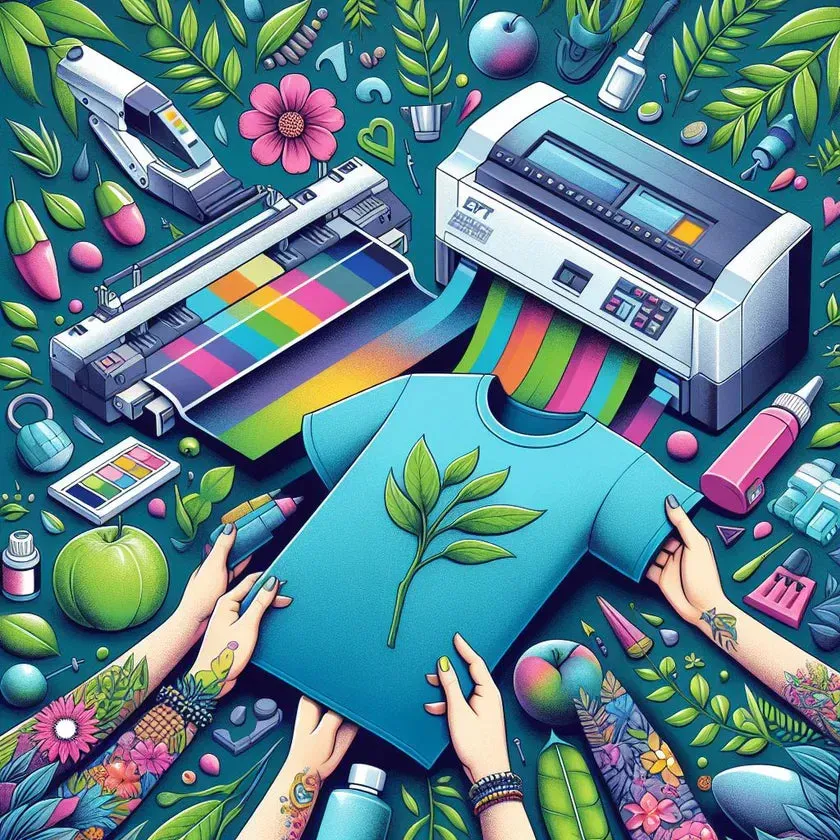The environmental impact of UV DTF printing is becoming increasingly significant as industries seek more sustainable methods in their operations. This innovative printing technology, which utilizes ultraviolet light to instantly cure inks, not only enhances print quality but also reduces harmful emissions commonly associated with traditional printing methods. By leveraging UV printing sustainability practices, businesses can adopt eco-friendly printing solutions that align with consumer demand for greener products. Notably, DTF printing environmental benefits include minimized waste generation and the use of recyclable printing materials, which together contribute to a healthier planet. In this article, we will explore these sustainable printing practices and the potential of UV DTF printing as a forward-thinking alternative in the industry.
Understanding the environmental ramifications of modern printing techniques, particularly through the lens of UV Direct to Film (DTF) methods, showcases a transformative shift in how we view ink application and curing processes. This cutting-edge approach harnesses ultraviolet light to cure inks immediately, significantly lowering the emissions rate compared to conventional ink formulations and contributing to a cleaner production environment. As businesses and consumers become more environmentally conscious, the demand for sustainable printing options, such as eco-friendly inks and recyclable materials, continues to grow. Moreover, the advantages associated with DTF printing not only promote efficiency but also highlight the industry’s commitment to ethical practices and resource conservation. This discussion will detail how these innovative solutions pave the way for a sustainable future in the printing sector.
The Benefits of UV DTF Printing for the Environment
UV DTF printing presents several benefits that position it as a leading eco-friendly option in the printing industry. The most significant advantage is its reduced emissions. Traditional solvent-based inks often release harmful volatile organic compounds (VOCs) into the air, whereas UV inks emit negligible to zero VOCs. This emission reduction directly contributes to lower air pollution levels, making UV DTF printing a more sustainable choice for businesses aiming to minimize their environmental impact.
Moreover, the UV curing process not only enhances the quality of prints but also reduces the overall waste generated during production. Since UV inks cure instantly upon exposure to light, there is little risk of ink spills or overuse, leading to efficient material usage. This effect not only benefits the environment by cutting waste but also provides economic advantages to businesses through cost savings.
Frequently Asked Questions
What is the environmental impact of UV DTF printing compared to traditional methods?
The environmental impact of UV DTF printing is significantly lower than traditional printing methods. It utilizes UV inks that emit low to zero volatile organic compounds (VOCs), reducing air pollution. Additionally, the instant curing process minimizes ink waste, making it a more sustainable choice.
How do UV DTF printing practices align with eco-friendly printing solutions?
UV DTF printing practices align with eco-friendly printing solutions by using water-based UV inks that are biodegradable and less harmful to health. This method also supports the use of recyclable materials, enhancing sustainability in the printing process.
What are the DTF printing environmental benefits in terms of waste reduction?
DTF printing environmental benefits include a significant reduction in waste due to its instant curing feature, which decreases the likelihood of spills and over-spray. This efficiency not only conserves resources but also leads to cost savings for businesses.
Which sustainable printing practices are adopted in UV DTF printing?
Sustainable printing practices adopted in UV DTF printing include the use of eco-friendly inks, energy-efficient printing technology, and sourcing materials from recyclable substrates, all of which contribute to reducing its environmental impact.
Can UV DTF printing materials be recycled, and how does this affect sustainability?
Yes, many materials used in UV DTF printing are recyclable. This ability to recycle contributes to sustainability by reducing landfill waste and promoting a circular economy in the printing industry, aligning with consumer demand for eco-friendly practices.
What role do consumer preferences play in the environmental impact of UV DTF printing?
Consumer preferences play a crucial role in shaping the environmental impact of UV DTF printing. As more buyers seek eco-friendly options, companies are motivated to adopt sustainable practices such as using reduced emissions technologies like UV DTF printing, further minimizing their overall environmental footprint.
| Key Points | |
|---|---|
| What is UV DTF Printing? | A modern printing method using UV light to cure inks instantly on various substrates. |
| Reduced Emissions | UV DTF printing emits very low to zero VOCs, reducing air pollution compared to traditional solvent-based inks. |
| Waste Reduction | The instant curing process minimizes ink spills, drips, and overspray, leading to less waste. |
| Eco-Friendly Inks | Manufacturers are developing biodegradable water-based UV inks as safer alternatives. |
| Energy Consumption | Advancements are being made in creating energy-efficient UV printers that maintain performance. |
| Recycling and Reusability | Substrates made from recyclable materials are increasingly being used. |
| Industry Trends | Regulatory pressures encourage sustainable practices and meet consumer demand for eco-friendly products. |
Summary
The environmental impact of UV DTF printing represents a crucial consideration in modern printing technology. This innovative method, known for its instant curing with UV light, significantly reduces harmful emissions and waste compared to traditional printing techniques. With the push towards sustainability, manufacturers are increasingly focusing on eco-friendly inks, energy-efficient models, and recyclable materials. Such advancements not only enhance the environmental profile of UV DTF printing but also align with growing consumer demand for sustainable solutions. As the industry evolves, the commitment to reducing environmental impacts will be key in ensuring a greener future for printing technology.



